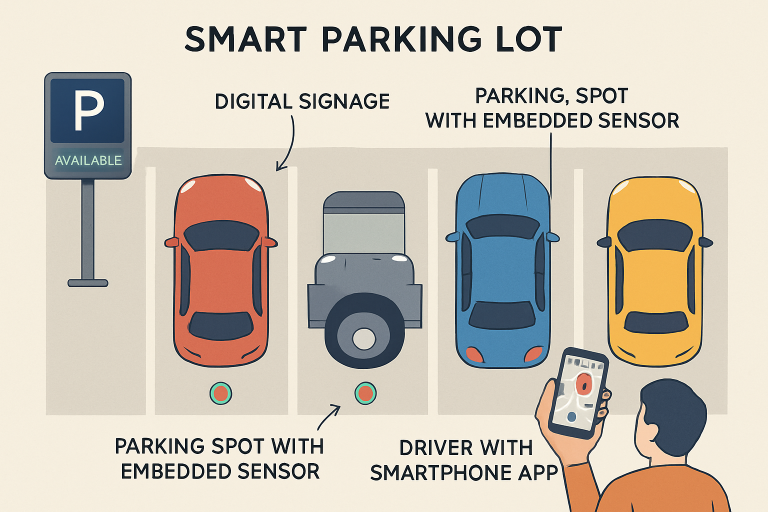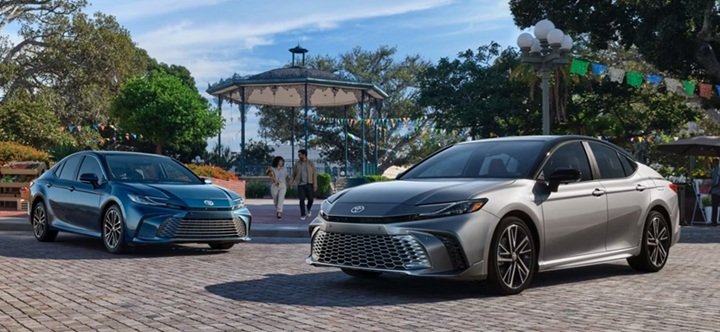Table of Contents
- Introduction
- Smart Parking Sensors
- AI-Powered Parking Systems
- Automated Parking Garages
- Contactless Payment Solutions
- Integration with Smart City Infrastructure
- Dynamic Pricing Models
- Green Parking Initiatives
- Data-Driven Insights
Introduction
Parking management is evolving rapidly as urban populations grow and cities become more congested. Modern solutions must minimize inconvenience, reduce environmental impact, and keep cities moving efficiently. One of the most transformative advances in this sector comes from using innovative technology to streamline processes for drivers and facility managers. Technologies like high-performance license plate recognition cameras provide real-time data on parking space occupancy and simplify access and payment, making parking more intuitive and efficient for all users.
These advances are making it possible to integrate parking management seamlessly with other aspects of urban development. From intelligent sensors and AI-driven analytics to dynamic pricing and green initiatives, today’s parking solutions offer scalable options for cities looking to accommodate growth without sacrificing convenience or sustainability. As demand for smarter, more effective parking increases, integrating high-tech hardware, machine learning, and contactless payment infrastructure delivers tailored solutions for diverse urban environments.
Smart Parking Sensors
Smart parking sensors have revolutionized the operation of parking facilities by offering real-time occupancy tracking. Embedded in parking spaces or overhead structures, these sensors detect vehicles and relay live updates to a networked management system. The data, accessible to drivers through mobile applications or digital signage, helps them find open spots quickly, saving valuable time and reducing the traffic congestion caused by vehicles circling in search of parking. Cities like Amsterdam have seen significant improvements in urban traffic flow thanks to their deployment of Internet of Things (IoT) technology to create a connected ecosystem of parking availability and guidance solutions. For more insight on how IoT is redefining urban mobility, visit SmartCitiesWorld.
AI-Powered Parking Systems
Artificial Intelligence is markedly improving the accuracy and efficiency of parking management. AI algorithms collate information from multiple sources, such as cameras, sensors, and historical usage data, to predict parking availability and optimize space allocation. This predictive capability directs drivers toward available spaces and enables cities or facility operators to forecast demand peaks and adjust accordingly. For example, Ghent, Belgium’s deployment of AI-based parking solutions demonstrates how real-time data and smart predictions can reduce congestion and environmental impact by guiding drivers to empty spaces quickly and efficiently. These strategies are instrumental in efforts to deploy limited urban resources more effectively, as detailed in this Forbes article.
Automated Parking Garages
Automated parking garages use robotic platforms, conveyor systems, or lifts to move vehicles to and from parking spaces. This eliminates the need for ramps and minimizes space typically occupied by driving lanes or walkways, allowing for a much denser arrangement of vehicles. Automated garages offer a way to dramatically increase capacity for cities struggling with scarce and expensive real estate without expanding the structural footprint. These systems also enhance security and reduce the risk of collisions or theft, offering peace of mind for drivers and additional control for facility operators.

Contactless Payment Solutions
Consumer demand for safety, speed, and convenience has accelerated the shift toward contactless payment in parking environments. Mobile apps and wireless technologies let users pay for parking with a tap, eliminating the need for tickets, cash, or waiting at kiosks. Popular platforms like ParkMobile have made it simple to pay for street parking, reserve spots in advance, and even receive reminders when time is running out. Contactless payments provide valuable user data for cities and operators and facilitate more dynamic, user-friendly pricing models.
Integration with Smart City Infrastructure
Modern parking solutions are not isolated systems but part of a comprehensive smart city infrastructure. By sharing parking data with transportation planning systems, traffic control networks, and public transit services, cities can collectively reduce congestion and optimize urban mobility. Connected systems enable cross-sector cooperation, from traffic light automation to better last-mile connectivity for commuters using personal vehicles and public transportation. This integrated approach is essential for citywide mobility management in the coming decades.
Dynamic Pricing Models
Dynamic pricing, enabled by real-time data, allows parking operators to modulate fees subject to demand. Pricing structures that fluctuate depending on day, time, and local events help ensure that spaces are available when most needed. This reduces traffic from drivers circling for low-cost or free parking and encourages off-peak use. In metropolitan areas, dynamic pricing has proven to increase turnover and revenue while enhancing urban spaces’ overall efficiency and livability.
Green Parking Initiatives
Sustainability is at the heart of many new parking management practices. Green parking initiatives include installing electric vehicle (EV) charging stations to cater to the rapid rise in EV adoption, using permeable paving materials to minimize stormwater runoff, and integrating urban green spaces into parking facilities. These features lessen environmental impact and improve the quality of life by making parking areas more attractive, accessible, and in harmony with their surroundings. For current trends in EV charging infrastructure, see this overview from the U.S. Department of Energy.
Data-Driven Insights
Parking systems generate critical data about usage patterns and user behavior. By leveraging these insights, facility managers can optimize pricing, staffing, operational hours, and maintenance planning. Analyzing metrics such as occupancy rates, duration of stay, and peak hours facilitates responsive management and can drive innovation in customer experience and profitability. This analytical approach sets a new standard for operational efficiency and customer service in parking management worldwide.
Embracing these new technologies and strategies is key for cities and parking operators aiming to keep pace with urban growth, environmental demands, and the evolving preferences of modern drivers.



